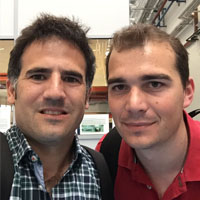In industry the capacity to automate processes is largely determined by the number of products to be manufactured, as well as the similarity between the different varieties of these.
The automation of verification processes reduces delays, brings down costs and minimizes errors.
In the aeronautics sector, specifically with regard to the electrical systems and equipment that make up each aircraft, the wide variety of configurations and the small number of systems to be manufactured do not allow such equipment to be manufactured using an automated process, so their manufacturing processes are subject to a higher probability of incidence of human error.
Therefore, verification and quality control processes play a fundamental role, and even more so when we focus on the field of defence, in which each aircraft has a unique configuration that is determined by the requirements of the client, depending on their needs.
It is therefore necessary to provide greater reliability and efficiency to the verification processes of the electromechanical equipment that make up the aircraft, and to reduce the cost and time employed in the identification of faults in design or manufacturing, which often produces a bottleneck in the production chain.
To perform the verification tests on aircraft control units a list of the set of tests to be performed is required. In each test the values are defined for the signals that are sent to the equipment that is being tested. This will simulate the signals that the equipment will receive from other systems, sensors, etc.
Furthermore, the tests must detail the operations, or movements performed on elements such as switches, breakers or push buttons that the operator must perform in each step of the test to verify the correct operation of the equipment.
This file will gather the set of electromechanical tests that must be performed on the equipment to verify correct functioning. Automated Test Equipment (ATE) is used to do this. ATE can interpret the language of the test file to electrically stimulate equipment to be tested through electrical signals in the form of voltages and currents and measure the response.
These files of electrical tests have so far been drawn up manually, interpreting the electrical plans of the equipment. This is a big cost in both time spent doing the tests, and in the drawing up of the testing process itself.
From design files, the automatic programmer automatically generates all the electrical and operational tests to perform on that equipment in a matter of seconds.



